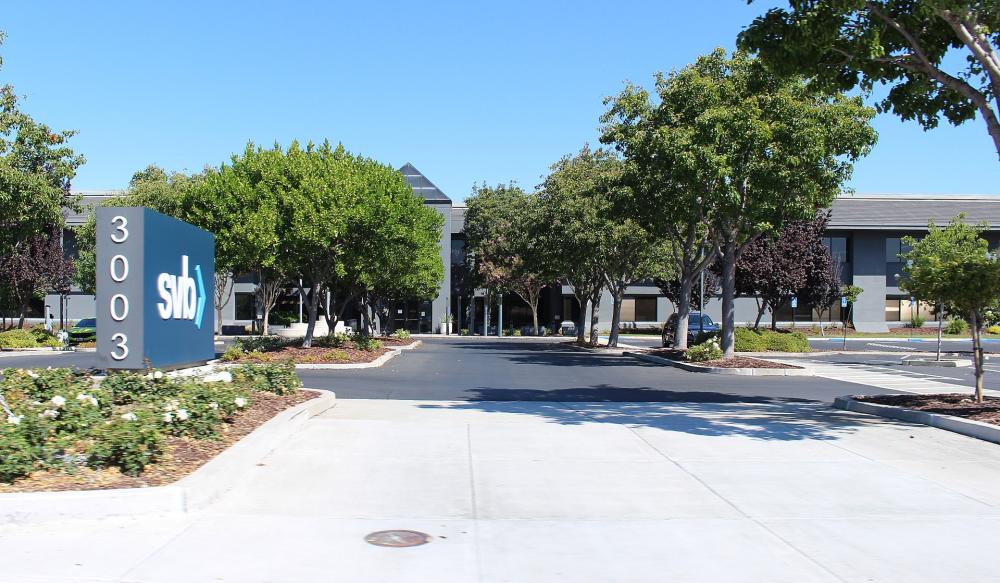-
Posts
3,840 -
Joined
-
Last visited
-
Days Won
119
richardmurray's Achievements
Single Status Update
See all updates by richardmurray
-
How does a bank collapse in 48 hours? A timeline of the SVB fall
By Ramishah Maruf and Allison Morrow, CNNThis week, the go-to bank for US tech startups came rapidly unglued, leaving its high-powered customers and investors in limbo.
Silicon Valley Bank, facing a sudden bank run and capital crisis, collapsed Friday morning and was taken over by federal regulators.
It was the largest failure of a US bank since Washington Mutual in 2008.
Here’s what we know about the bank’s downfall, and what might come next.
What is SVB?
Founded in 1983, SVB specialized in banking for tech startups. It provided financing for almost half of US venture-backed technology and health care companies.While relatively unknown outside of Silicon Valley, SVB was among the top 20 American commercial banks, with $209 billion in total assets at the end of last year, according to the FDIC.
Why did it fail?
In short, SVB encountered a classic run on the bank.The longer version is a bit more complicated.
Several forces collided to take down the banker.
First, there was the Federal Reserve, which began raising interest rates a year ago to tame inflation. The Fed moved aggressively, and higher borrowing costs sapped the momentum of tech stocks that had benefited SVB.
Higher interest rates also eroded the value of long-term bonds that SVB and other banks gobbled up during the era of ultra-low, near-zero interest rates. SVB’s $21 billion bond portfolio was yielding an average of 1.79% — the current 10-year Treasury yield is about 3.9%.
At the same time, venture capital began drying up, forcing startups to draw down funds held by SVB. So the bank was sitting on a mountain of unrealized losses in bonds just as the pace of customer withdrawals was escalating.
The panic takes root…
On Wednesday, SVB announced it had sold a bunch of securities at a loss, and that it would also sell $2.25 billion in new shares to shore up its balance sheet. That triggered a panic among key venture capital firms, who reportedly advised companies to withdraw their money from the bank.The bank’s stock began plummeting Thursday morning and by the afternoon it was dragging other bank shares down with it as investors began to fear a repeat of the 2007-2008 financial crisis.
By Friday morning, trading in SVB shares was halted and it had abandoned efforts to quickly raise capital or find a buyer. California regulators intervened, shutting the bank down and placing it in receivership under the Federal Deposit Insurance Corporation.
Contagion fears subside
Despite initial panic on Wall Street, analysts said SVB’s collapse is unlikely to set off the kind of domino effect that gripped the banking industry during the financial crisis.“The system is as well-capitalized and liquid as it has ever been,” Moody’s chief economist Mark Zandi said. “The banks that are now in trouble are much too small to be a meaningful threat to the broader system.”
No later than Monday morning, all insured depositors will have full access to their insured deposits, according to the FDIC. It will pay uninsured depositors an “advance dividend within the next week.”
What’s next?
So, while a broader contagion is unlikely, smaller banks that are disproportionately tied to cash-strapped industries like tech and crypto may be in for a rough ride, according to Ed Moya, senior market analyst at Oanda.“Everyone on Wall Street knew that the Fed’s rate-hiking campaign would eventually break something, and right now that is taking down small banks,” Moya said on Friday.
The FDIC typically sells a failed bank’s assets to other banks, using the proceeds to repay depositors whose funds weren’t insured.
A buyer could still emerge for SVB, though it’s far from guaranteed.
ARTICLE
https://www.cnn.com/2023/03/11/business/svb-bank-collapse-explainer-timeline/
U.S. regulators try to reduce bank-run risk, discuss fund to backstop deposits if more banks fail in wake of SVB collapse
BYTONY CZUCZKA, VICTORIA CAVALIERE AND BLOOMBERGUS regulators are racing against the clock to find solutions for failed Silicon Valley Bank while Treasury Secretary Janet Yellen said officials are focusing on protecting depositors, as officials seek to avoid a wider bank run.
After SVB collapsed into receivership on Friday in the biggest bank failure in over a decade, the Federal Deposit Insurance Corp. kicked off an auction process for its assets late Saturday, as it aims to make a portion of clients’ uninsured deposits available as soon as Monday, according to people with knowledge of the situation. The agency and the Federal Reserve have also discussed a fund to backstop deposits if more banks fail as part of wider contingency planning, people said.
Those efforts are aimed at protecting depositors, rather than bailing out investors, Yellen said on CBS’s “Face the Nation” on Sunday.
“During the financial crisis there were investors and owners of systemic large banks that were bailed out,” the Treasury Secretary said. “And we’re certainly not looking — and the reforms that have been put in place means that we’re not going to do that again. But we are concerned about depositors and we’re focused on trying to meet their needs.”
Democratic Representative Ro Khanna, whose California district is home to SVB, said the FDIC is working to find a buyer and urged the US government to guarantee all of the bank’s deposits. House Speaker Kevin McCarthy, a Republican from California, told Fox News’s “Sunday Morning Futures” he’s “hopeful that something can be announced today to move forward.”
Concern about the health of other smaller banks focused on the venture capital and startup communities is prompting regulators to consider extraordinary measures. Officials have discussed the new fund to backstop deposits in conversations with banking executives, in the hope that setting up such a vehicle would reassure depositors and help contain any panic, said the people. They asked not to be identified because the talks weren’t public.
Final bids for SVB’s assets are due Sunday afternoon but a winner may not be known until late in the day, other people with knowledge said.
In her CBS interview, Yellen renewed assurances that the US banking system is safe, well-capitalized and resilient.
“I simply want to say that we’re very aware of the problems that depositors will have,” she said. “Many of them are small businesses that employ people across the country and of course this is a significant concern and working with regulators to try to address these concerns.”
US regulators are under time pressure to sell assets of SVB Financial Group, the bank’s parent, prompting offers by some investment firms to provide financing to companies with cash trapped at Silicon Valley Bank.
Asked whether the FDIC might be open to a “foreign bank” coming in as a buyer, Yellen said, “I’m sure they’re considering a wide range of available options that include acquisitions.”
While the FDIC insures deposits of up to $250,000, the vast majority of funds held in at SVB far exceeded that. The agency has said it will make 100% of protected deposits available on Monday.
Asked on “Face the Nation” about the option of a private-sector bank buying SVB’s assets, Khanna said: “That would be the ideal situation and our delegation that talked to the FDIC last night made that clear. That’s what we urged them to work on, they said they’re working on it.”
Republican presidential candidate Nikki Haley said Saturday that US taxpayers shouldn’t bail out Silicon Valley Bank. “Private investors can purchase the bank and its assets,” Haley, a former South Carolina governor and US ambassador to the United Nations, said in a statement.
The White House repeated its assurances on the US banking system, with Office of Management and Budget Shalanda Young citing regulatory changes put in place after the financial crisis more than a decade ago.
“What I’ll say about the banking system overall is it’s more resilient, and has a better foundation than before the financial crisis,” Young said on CNN’s “State of the Union.”
“Americans can have confidence in the safety and soundness of our banking system” and the US economy is “extremely strong,” Yellen said on CBS.
List of bank failures in the usa
https://en.wikipedia.org/wiki/List_of_bank_failures_in_the_United_States_(2008–present)Wiki of collapse of silicon valley bank
https://en.wikipedia.org/wiki/Collapse_of_Silicon_Valley_Bank








.thumb.jpg.ed52910791d00308abb8c218695bec88.jpg)



